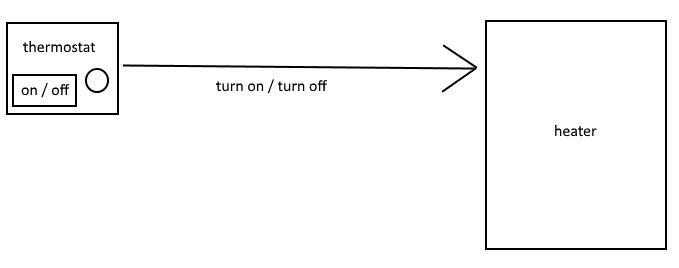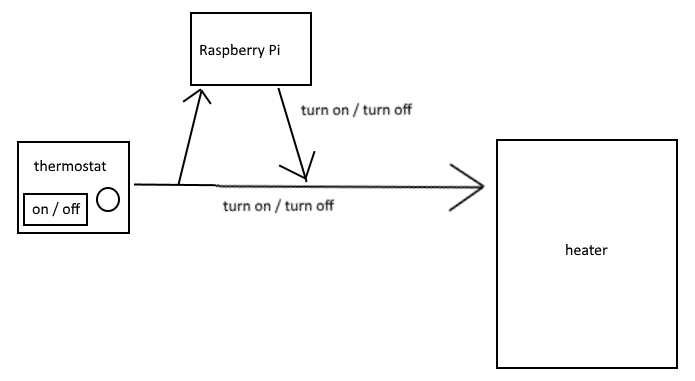Currently the heating system in my house works as outlined in the following diagram. I push a button on the thermostat which will either turn on or turn off the thermostat. When the thermostat is turned on, the thermostat will turn send a signal to the heater to turn on or off depending on the temperature.
I want to use my Raspberry Pi (the original Raspberry Pi Model B (512MB RAM)) to be able to program a timer so the system can be a bit smarter and I can be warm in the mornings.
I want the RPi to send an on / off signal to the heater based on some logic that I can define. I am a skilled software developer and intend to refer to the many open source gpio software solutions available in developing the logic. However, I have 0 experience with gpio so I thought I'd ask here if 1) this is feasible, and 2) what pins I need to be concerned with.
The cable connecting the thermostat to the heater is simply a set of 2 copper wires, the live and (I presume) neutral. My intention is to cut the wire (this is actually already done, accidentally, and soldered back together), and attach the cut ends to the gpio.
I also want the original thermostat functionality to remain intact. The following diagram is a basic outline of what I'd like to achieve
The questions I have are
- What pins of the gpio do I need to connect the ends of the wire to?
- What does the logic need to trigger in regards to these pins? e.g. I want the heat to turn on at 5 AM. The timer event fires, and uses a _gpioService to do something which ultimately sends a signal to the heater to turn on. What is a basic outline of what the _gpioService needs to do to send the signal?


